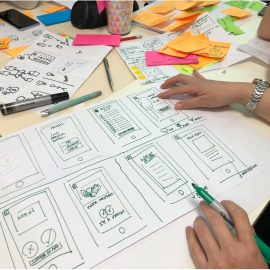
What does it mean to evolve as a leader? How can you maintain authenticity while adapting to new leadership challenges?
Leadership identity development is a transformative journey that requires both personal growth and professional adaptation. In her book Act Like a Leader, Think Like a Leader, Herminia Ibarra explores how leaders can successfully navigate this evolution while staying true to their values.
Keep reading to embrace your leadership transformation and overcome common obstacles that emerge along the way.
Understanding Your Evolving Leadership Identity
As you rise to a position of leadership, your sense of identity naturally evolves. The journey involves staying true to yourself while adapting to new responsibilities and roles. This transformation, while challenging, is essential for your leadership identity.
Beyond Authenticity and Conformity
The concept of a “true self” isn’t fixed—it’s dynamic and shaped by new experiences. As you take on more complex leadership roles, you’ll need to develop skills in managing ambiguity and uncertainty. Your role shifts from executing directives to setting the company’s strategic direction.
Overcoming Imposter Syndrome
One of the biggest hurdles in leadership progression is dealing with imposter syndrome while trying new approaches. Take Sheryl Sandberg’s example—her transition into a more public-facing role demonstrates how leaders often need to push beyond their comfort zones. You can overcome these feelings by taking on activities outside your usual scope, such as creating discussion groups or tackling challenges beyond your primary responsibilities.
Embracing Experimentation
Leadership advancement requires stepping outside your comfort zone and adopting new behaviors. Think of it like trying on different aspects of your personality. Just as consultants learn by observing and adapting successful practices from experienced colleagues, you can incorporate admired leadership qualities into your unique style.
Crafting Your Leadership Story
Your personal narrative needs to evolve alongside your leadership journey. Consider Olav’s progression into a strategic role or George’s transition to a more collaborative leadership style. By updating the stories you tell about yourself, you help others understand and accept your evolving leadership approach.
Moving Forward
Remember that your past experiences create the foundation for continuous growth. Embrace new opportunities, maintain a learning mindset, and be open to refreshing your self-perception. While feelings of inauthenticity may arise as you define your evolving identity, these experiences are crucial stepping stones in your leadership development journey.






